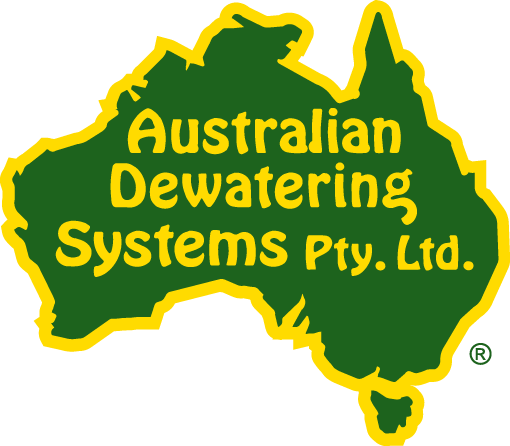Well Point Dewatering
For construction sites where deep well dewatering is not suitable, Australian Dewatering Systems Pty Ltd (ADS) well point (also known as spear point) dewatering system is an effective and economical way to reduce the level of the water table to below the required excavation level.
In addition to lowering the groundwater table to facilitate a dry working platform, wellpoints can also prevent groundwater build-up behind the shoring wall. Where applicable, this allows ground anchors to be installed in dry conditions. Wellpoint dewatering can effectively draw the water table down to between 3 and 8 metres depending on pump selection and the soil permeability.
In consultation with the client and the environmental consultant, the experienced staff at ADS can tailor the dewatering solution to suit site specific requirements. The well point system is ideal for basement excavations, civil works and pit excavations.
ADS equipment may be hired from one week to one year and beyond, depending on the project size and the client’s scope of works. Our extensive range of pumps, filtration tanks, hoses, etc, may be hired individually or as a complete package.
Methodology
Well point dewatering systems are installed around the perimeter of the site against the excavation shoring and are coupled with a perimeter discharge line via a pump set. Various pumpsets are available specific to the site requirements.
To achieve the best outcome for the client, ADS consults with the relevant environmental bodies and reviews the geotechnical information provided.
Advantages
Quick Deployment: ADS can efficiently and effectively install a well point system to reduce construction downtime. Our experienced team has the know-how to do this with minimal impact on program.
Cost Effective: Well point systems and ancillary dewatering equipment can be hired for short and long periods of time, and individually, to cater to the clients dewatering requirements.
Environmentally Sound: In most site dewatering applications, the water is removed from the construction site through our deep well or well point systems and treated prior to discharge. If it is deemed necessary through consultation of the DMP and the clients environmental consultant, ADS monitors and treats the ground water through our state-of-the-art, computerised filtration system. This system provides real-time telemetry so that the discharged water meets statutory requirements.
Technical Background
Site dewatering is commonly required when excavations are required to extend beyond the ground water table.
For shallow excavations (generally under 4 metres) well-point dewatering is often the most efficient method to achieve an adequate draw down in permeable soils, eg. sand, clayey sand, etc.
PVC spears (well points) are jetted around the site perimeter from ground level and later connected to a common header pipe. These spears draw water (under vacuum) from beneath the excavation.
The water is then discharged in accordance with a Dewatering Management Plan (DMP), which is a requirement for the client to have prior to commencing dewatering.
A filtration process is often required depending on the water quality at the discharge point, and the findings of the soil reports provided by the client.
ADS can offer comprehensive dewatering packages which include a dewatering plan, equipment specification and recommendation, filtration and groundwater monitoring. This is completed with the client and the relevant environmental consultants.
Groundwater Management
Groundwater management involves strategic positioning of well points to provide a dry working platform to limit the effects on the groundwater table (GWT) beyond the site.
A basic drawdown effect is illustrated in the diagram. The water table forms a level of depression between the natural GWT and the well points.
The extent of local reduction in the water table is dependent on the well point depth, amount of well points used, the positioning of the well points and the permeability of the soil.
The depressed water table at distance (H) (as shown in the diagram) from the natural GWT depicts the dewatering of a typical high-rise site.
Design Criteria
ADS provides technical assistance for selection of the most efficient method for your particular job or site. We will then manage the system leaving you to carry on with the rest of your construction requirements.
Note: All drawings are examples only for the purpose of demonstration for the need to use a dewatering scenario, each site has specifically designed requirements and should be consulted on an independent basis with an ADS representative.

The information on this page is available for download as an A4 sized PDF data sheet suitable for printing.

Wellpoint dewatering close on a property line.





